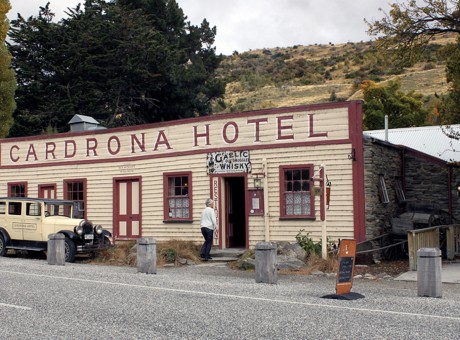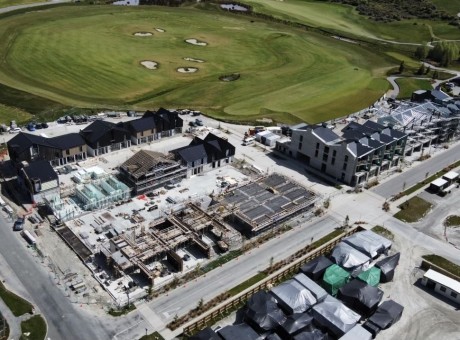Airlines call Queenstown Airport 'end of life'

Unless the council is willing to defy existing community sentiment and loosen up noise boundaries, air services at Queenstown Airport are at "end of life".
That's the view of the Board of Airlines Representatives of New Zealand (BARNZ), who has hit out at what it calls "very modest" growth plans by local decision makers.
The group represents 33 members, including the four airlines that fly into Queenstown, Air New Zealand, Qantas, Virgin Australia and Jetstar.
Its submission on the airport's draft 10-year masterplan, released in May, has been made public today.
In it, BARNZ acknowledges the "tensions that exist between a need to plan appropriately for growth of air services, and the difficulty of planning for growth of air services in a location where the ability to grow air services is constrained by community preference, and by noise boundaries in the district plan".
The airport has stated it is set to work within existing noise boundaries for the life of their latest plan.
However that doesn't suit the airlines BARNZ represents.
"In this scenario, airlines should only be asked to make very limited investment into aeronautical assets – as there cannot be a return on that investment," it says.
The airport's works schedule is based on accommodating 3.2 percent compounded annual growth in passenger numbers.
But BARNZ thinks the figure is unrealistic - in the ten years to 2019 growth of air services to Queenstown was 10.1 percent, it says.
It wants to know what levers the airport plans to pull to "control growth of air service such that they do not exceed this parameter".
It is also challenging a key assumptions made by the airport - that it will be able to accommodate for growth within existing noise boundaries by the increased uptake by airlines of larger and quieter aircraft.
BARNZ says it is not a given that new technology will be quieter, and that is still true for electric aircraft.
Plus, it is its view airlines will not appreciate the hassle of having imposed limitations on which if their fleet can or cannot fly in and out of Queenstown, in order to achieve the growth with less noise desired by the airport's bosses.
BARNZ says the airport's 10-year outlook is shortsighted, and better practice in its opinion is to be looking 50 to 100 years into the future.
"At the point that this Draft Masterplan moves to a final version, reported to Queenstown Lakes District Council and ultimately considered for approval by Queenstown Airport Corporation (QAC) board, there will be some eight years remaining to 2032. This time horizon is very short, and in many ways assists QAC in avoiding discussion of the matters raised in this submission."
BARNZ concludes its submission by saying QAC faces challenges "in managing an asset which is reaching capacity" and it wants to see a "conversation" between the airport, the council and the community.
The problem may be, that conversation is already well underway, and the direction it is taking does not suit BARNZ and the airlines it represents.
In his reply to BARNZ, also made public today, QAC chief executive Glen Sowry talks about airports and airlines needing "social licence to operate" and "striking the right balance" between aeronautical activity, the capacity of regional infrastructure and "preserving what makes the region a special place to live, work and visit".

Queenstown Airport chief executive Glen Sowry has pushed back at claims his airport is at 'end of life' stage.
He says in developing the draft master plan the airport has "undertaken extensive community consultation and have actively listened to the communities we serve and to our shareholders".
A common theme: that growth should be carefully managed.
"Submitting to limitless growth and turbo-charged tourism is considered an outdated approach and is not supported by stakeholders in this region," Mr Sowry says.
"There is also strong alignment in our region to tackling the challenges associated with climate change."
He pushes back at BARNZ's "end of life" claim.
"QAC has a significant landholding in Frankton which can accommodate expansion in the future should that be supported.
"The current noise boundaries are not a fixed geographic or permanent legal constraint and if there was support to do so they could be amended again through available regulatory processes, which include community consultation."
He isn't concerned by BARNZ's view a 10-year plan is inadequate, and refers to any long term plan as a "living document", subject to review and able to respond to the opportunities and constraints of the day and community expectations.
"All participants in the aviation sector understand we are on the verge of global changes to aviation as the focus on decarbonisation and innovative technology escalates, which highlights the importance of an iterative and responsive approach to long-term infrastructure planning."
Also made public today were submissions by Airways and the Civil Aviation Authority.
Queenstown Airport is continuing to work with its shareholders to finalise its master plan, and the latest draft version of the document can be found here.
It details $350 million of investment on the ground to accommodate 800,000 extra passenger movements a year within 10 years.
Read more: Queenstown Airport $350m growth plan - 800,000 more passenger movements



























